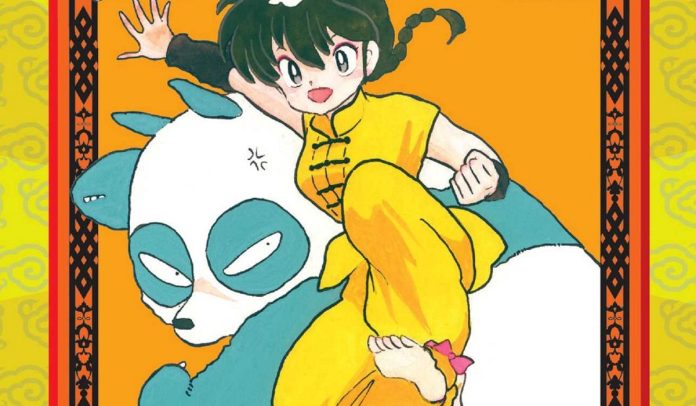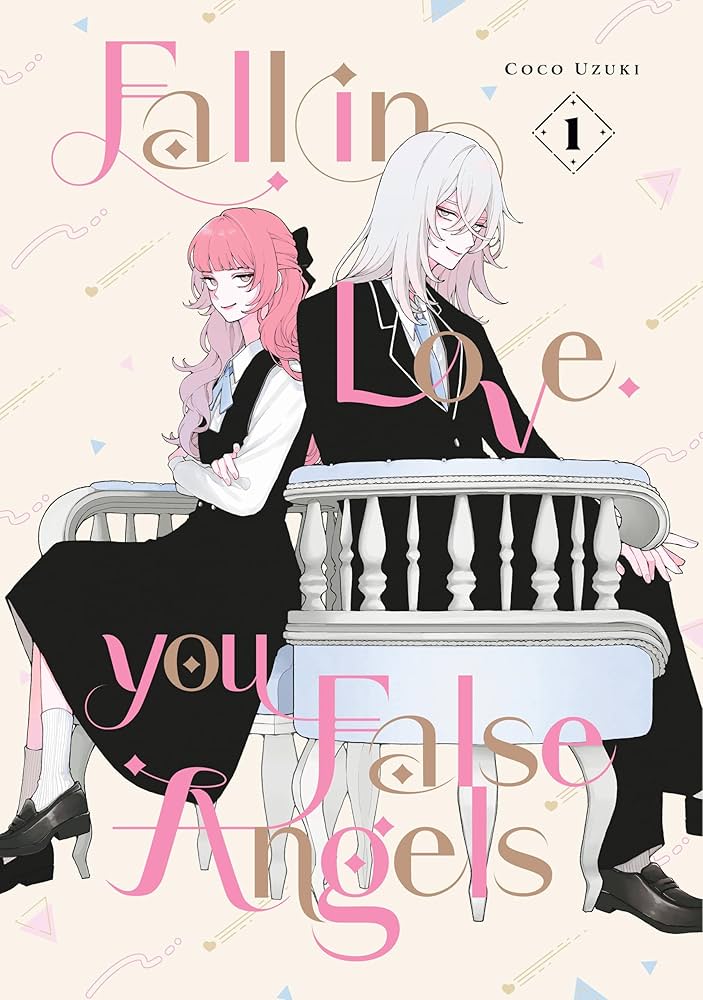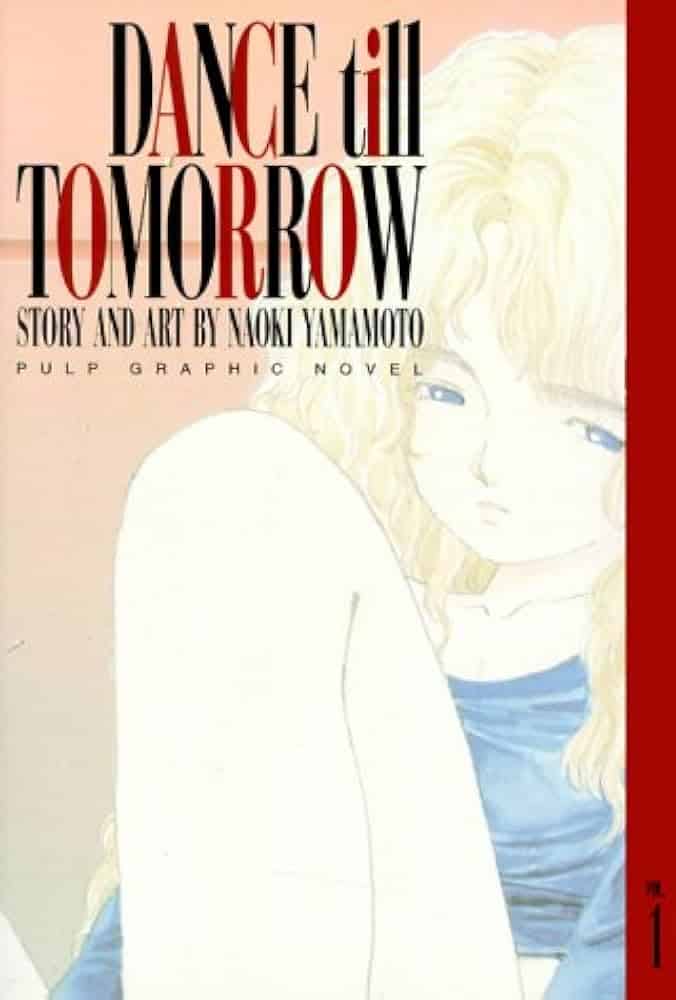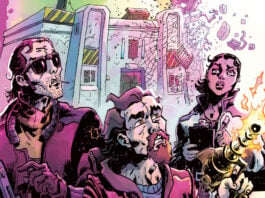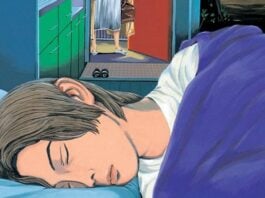There are two universal truths in today’s rapidly changing comics industry. The first is that February is nearly over. The second is that more people are reading romantic manga and Webtoons (aka vertical scroll comics) than ever before. Therefore, we at Comics Beat are continuing our Beat’s Bizarre Romance. Every week, we’ll have three writers recommend some of their favorite comic romances from Japan, Korea and elsewhere. This week we have duplicitous high schoolers, horny college students and, of course, Ranma.
Fall In Love, You False Angels
Writer/Artist: Coco Uzuki
Original Digital Edition Translator: Susamaji
Print Edition Letterer: Lys Blakeslee
Print Edition Editor: Julia Murphy
Cover Design: Julia Murphy
Publisher: Kodansha
When we sit in front of a mirror, the way we perceive the image staring back at us is shaped by external factors. Coupled with others’ perceptions of us, all kinds of connections and complications crop up in our interpersonal relationships. For Otogi Katsura, her looks and the persona she created around it can be a blessing and a curse. She’s gorgeous and she knows that. She’s aware of the pedestal other people put her on. With cute bangs that frame her beautiful face and voluminous locks that flutter in the wind, she steals hearts left and right.
To fit that angelic image she acts the part, but in truth, she’s sardonic and calculating. She’s especially cautious around the other half of their first-year presidential duo Toki. He can never be on the same level with Otogi obviously, but he isn’t short of good genes either. Too bad that one day Otogi accidentally slips up in front of Toki, who in turn reveals his hidden hand of cards. Will these fallen angels finally see eye to eye? Or will they clumsily salvage whatever is left of their personas and protect the status quo?
Coco Uzuki‘s introduction to English-speaking fans was Hoteri Hotette First Kiss, licensed by Seven Seas Entertainment. Her new series Fall In Love, You Fallen Angels is my first time reading their work. The first volume hit the shelves on February 11th, just before Valentine’s Day.
Perfect protagonists hiding deep personality flaws are a trope as old as time. Horimiya, Maid-sama!, Komi Can’t Communicate, and Kaguya-sama: Love is War come to mind as examples that garnered massive popularity. It’s undeniably appealing when somebody sees you at your worst, with the best still to come. Even better, they see that version of you and still accept you.
This is more or less the premise of Fall In Love, You False Angels. Before all the buts, I have to say I had a lot of fun reading the first volume. The art style is gorgeous. I especially appreciated Lys Blakeslee‘s lettering and some of the fonts they used in the volume. It’s a beautiful work inside and out.
Here comes the but. I would have liked the series much more if there was a greater difference between Toki and Otogi’s two sides. Coco Uzuki underlines it by switching between their pretty faces and choosing whimsical expressions for Otogi while going for cooler ones for Toki. While I wouldn’t say it’s a total failure, they just seem like people who smile and are kind to others in a social setting. Other reviewers I came across who have read further ahead on K-MANGA mention that the series picks up and becomes all the more interesting in the second volume. Which is exciting! But this introductory volume is still a great option if you’re looking for a romance series to read. Plus, it’s available both digitally and in print. To quote the great Siskel and Ebert, two thumbs up. — Merve Giray
Dance Till Tomorrow
Writer/Artist: Naoki Yamamoto
English Adaptation: Rachel Thorn
Lettering & Touch-Up Art: Dan Nakrosis
Publisher: VIZ
Naoki Yamamoto is a pretty interesting manga artist. Most of his career consists of sex comics that put women in extreme situations. But while Yamamoto clearly loves what he does, occasionally he’ll spread out and tell a larger story in his chosen medium. For instance, Believers, a desolate tale about three cultists on an island; Arigato, in which a workaholic father must fix his deeply broken family; and Red, which depicts Japan’s 1960s student protest movement of the 1960s. Yamamoto also supervised the magazine Manga Erotics F, which published artists like Usamaru Furuya (Lychee Light Club) and Asumiko Nakamura (Utsubora) who pushed boundaries in their own way.
Dance Till Tomorrow, the one manga series drawn by Yamamoto available in English, isn’t particularly interested in pushing boundaries though. It’s an ordinary sex comedy about an ordinary college student named Suekichi who falls backwards into a huge inheritance. Now a girl named Aya is following him around. She’s beautiful and great in bed, but does she love him for who he is or does she just want his money? What about Miyuki, another woman with her own secrets?
At its root this comic is simple adolescent male wish fulfillment about becoming rich and having pretty girls fall in love with you. The execution is trickier than that, though. It starts with Suekichi waking up in bed with Aya with no idea of who she is or how she got there. They have sex just three chapters later; even after Suekichi goes all the way with Aya, he still doesn’t know if he can trust her. When I first read Dance Till Tomorrow I was used to the popular manga status quo of romantic partners only having offscreen sex at the very end (if they ever did) once all their problems had been resolved. Yamamoto’s idea that sex was just another thing adults did when they felt like it, rather than the awkward climax of a romantic arc, was huge for me.
You can certainly read Aya as a misogynist fantasy who seduces Suekichi just so she can abscond with his money. Frankly, though, Aya runs away with Dance Till Tomorrow. She’s just such a fun character to follow: more sincere than you might expect, but also super crooked. Her non-stop patter with Suekichi has more in common with live-action trendy dramas (like 1991’s Tokyo Love Story) than other manga I’ve read from this time period.
I don’t know if Dance Till Tomorrow is a great comic or even anywhere close to Yamamoto’s best. I do know that it’s a lot more flavorful than you’d expect from (apparently) a shameless attempt to chase trends. While it’s been out of print for some time, I’d love to see it again–or perhaps some other book from Yamamoto’s catalog. Maybe not Arigato, though, I’m not sure if we’re ready for that one yet. — Adam Wescott
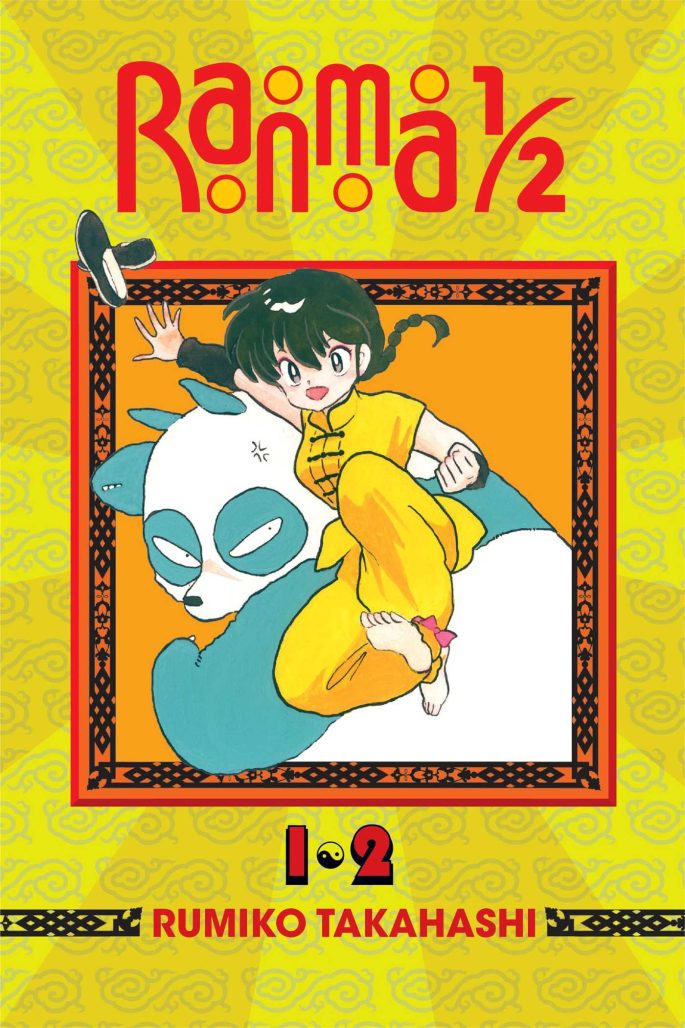
Ranma ½
Writer/Artist: Rumiko Takahashi
English Adaptation: Gerard Jones, Rachel Thorn
Touch-up Art/Lettering: Deron Bennett
Designer: Yukiko Whitley
Editor: Hope Donovan (2-in-1 Edition)
Publisher: VIZ
Writing about Ranma ½ almost seems superfluous for a column like this. For an older generation of manga fans, the classic manga by Rumiko Takahashi is a cornerstone of their introduction to Japanese comics. VIZ Media made its name publishing the series (and being the American home for every subsequent Takahashi manga). But with the new series on Netflix and as someone who was just in a bookstore where the series was referred to as “retro” by the youth, it never hurts to remember why a classic continues to be a classic.
The premise is simple. After falling into a cursed spring during a trip to China, Ranma Saotome becomes a young woman anytime he’s hit with cold water. This really becomes a problem when he and his father return to Japan to fulfill a promise. Years ago Ranma’s father Gendo, who now turns into an enormous panda, and Soun Tendo, who runs the Anything-Goes School of Martial Arts, arranged for Ranma to marry one of the three Tendo daughters. It’s decided the youngest, the headstrong Akane, will marry our hero/heroine and like in any classic romantic comedy, the two can’t stand each other. Wackiness ensues.
If ever there was a series where the phrase “wackiness ensues” actually applies, it is truly Ranma ½. Rivaled only by Dragon Ball, the series is THE definitive action comedy series. The action sequences are laugh out loud funny. Takahashi turns everyday objects and occupations into martial arts absurdism. If you thought the rhythm gymnastics fight in the anime was funny, wait until you read how it goes in the manga. But where Akira Toriyama eventually lets Dragon Ball’s more comedic elements fall away, Takahashi cranks the absurdity up even further.
The series features a deep bench of great supporting characters. Ranma and Akane’s rivals and romantic pursuers only get zanier especially when they can’t tell that Ranma’s male and female personas are the same person. At the heart of it, though, is the will they/won’t they tension between Ranma and Akane, one of the greatest couples in manga. Their romance as it progresses through the series is a joy to behold. They truly have feelings for each other; if only they could get past their egos to admit it. But then it wouldn’t be one of the great romantic comedies if they could. — D. Morris
Follow Beat’s Bizarre Adventure to get weekly manga and webtoon recommendations!

